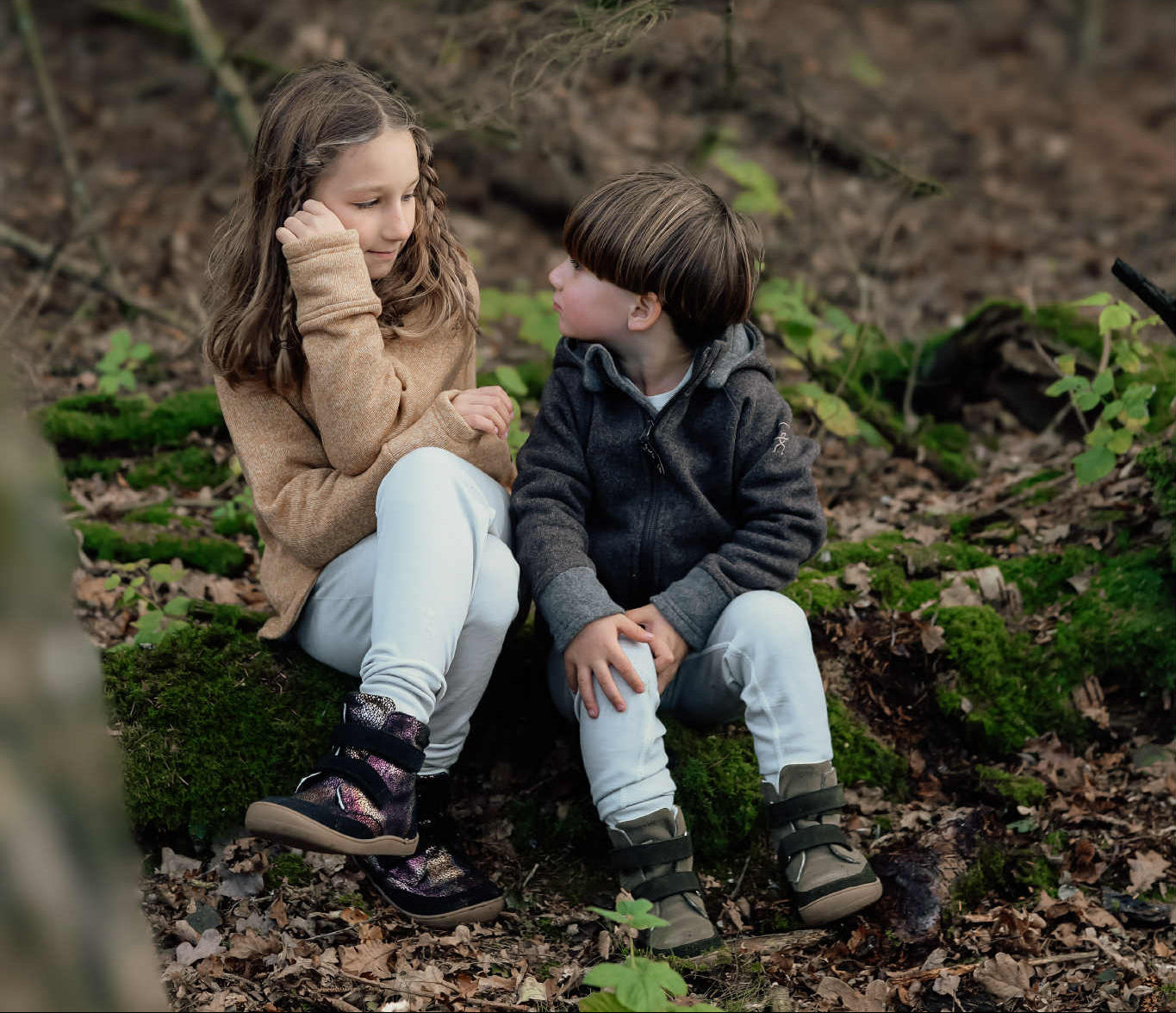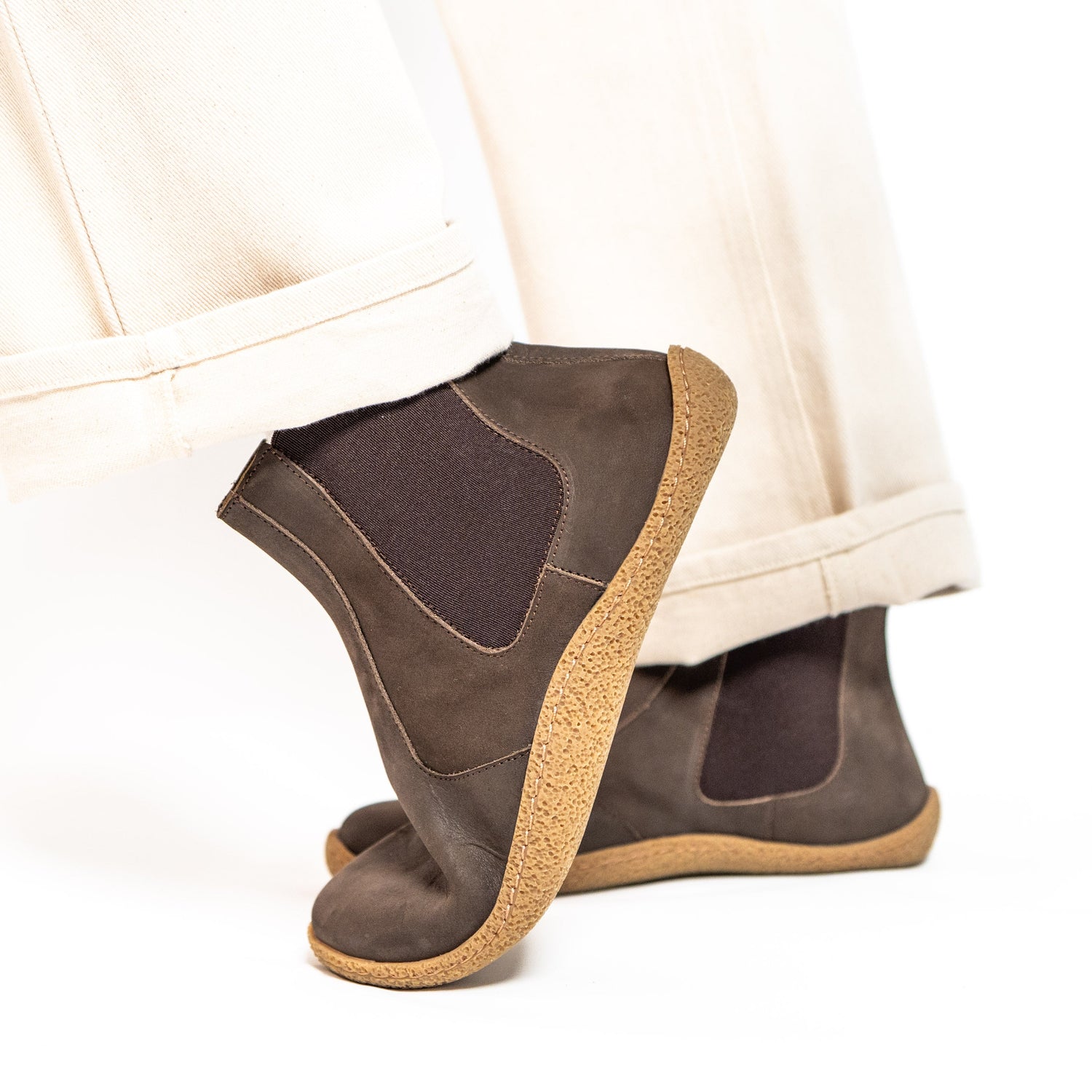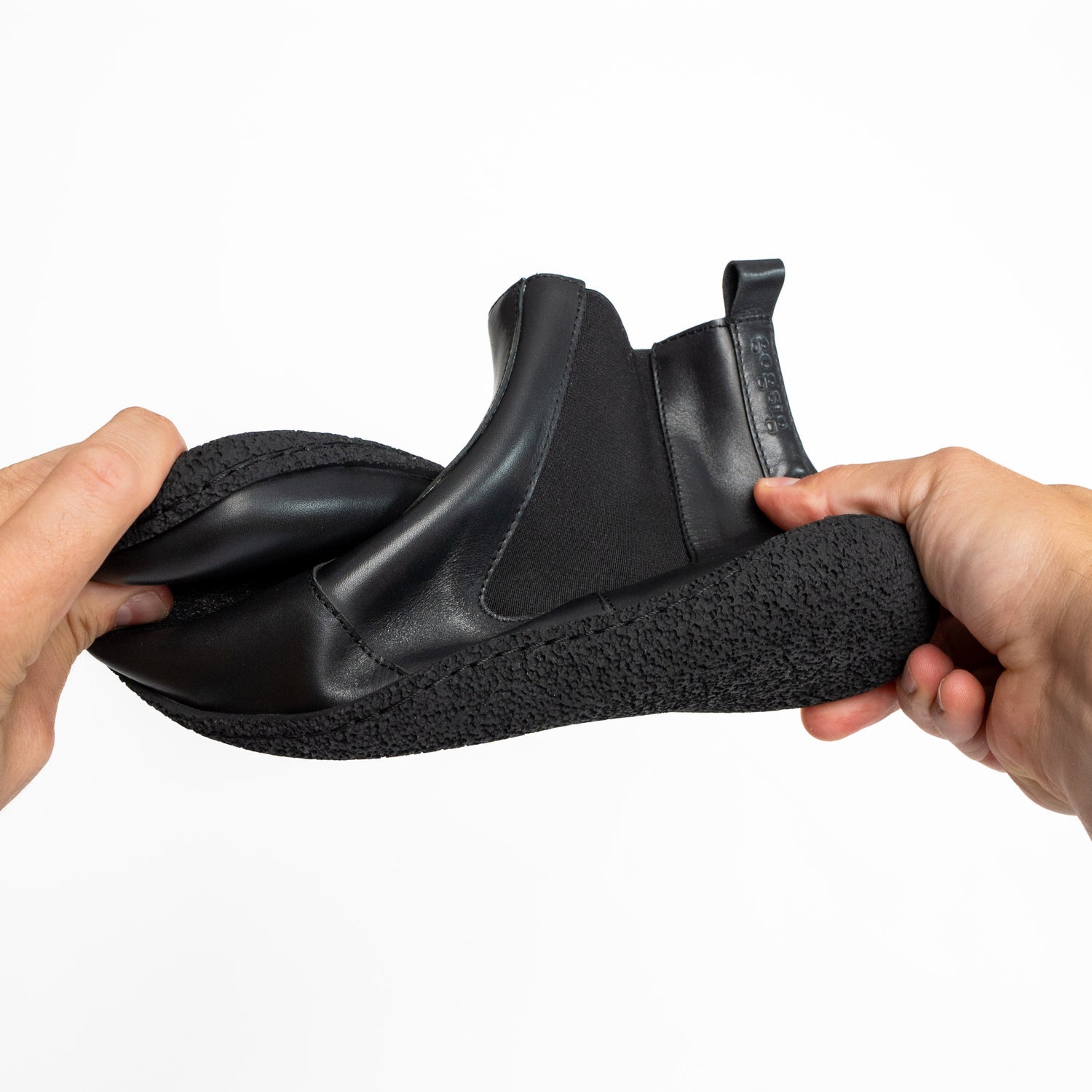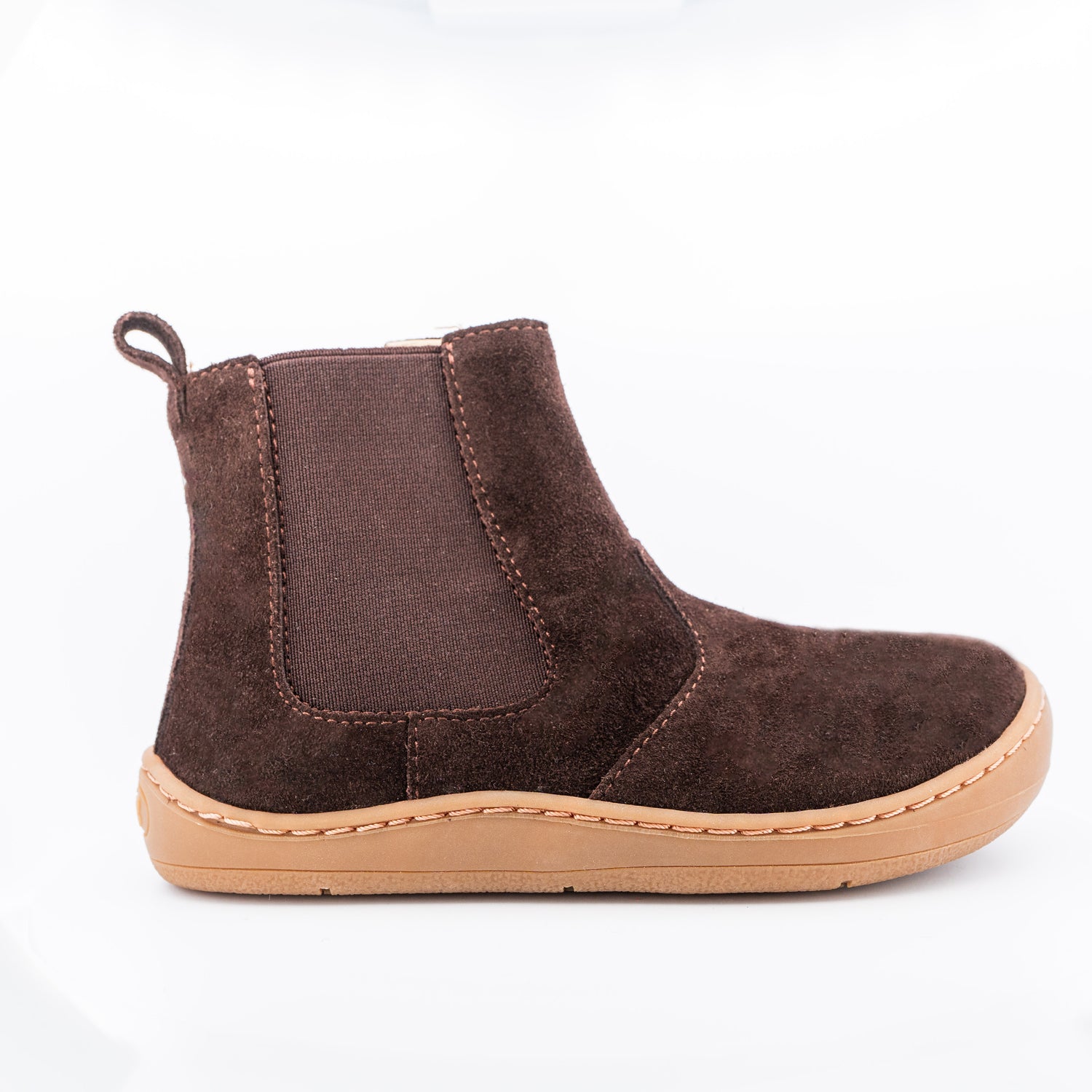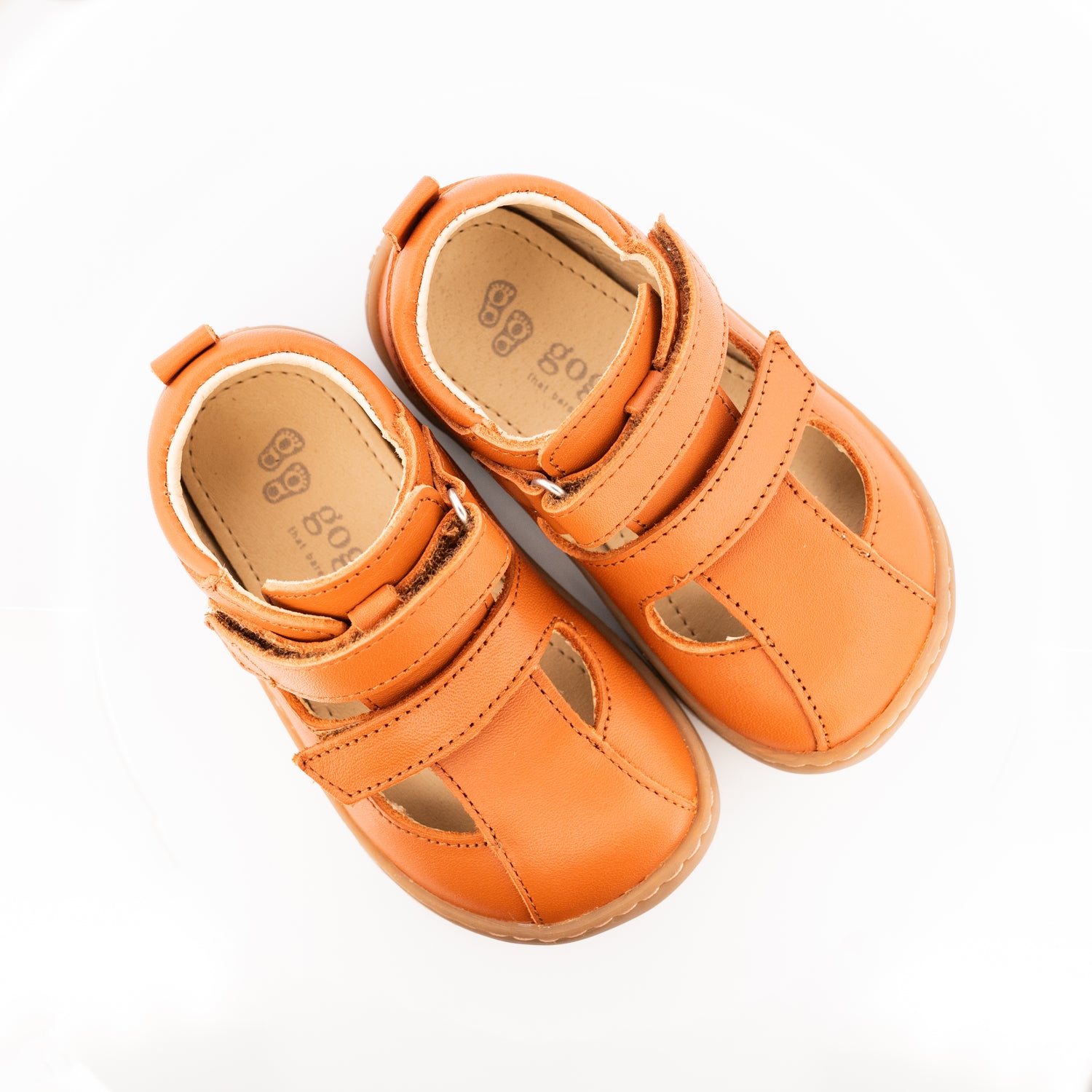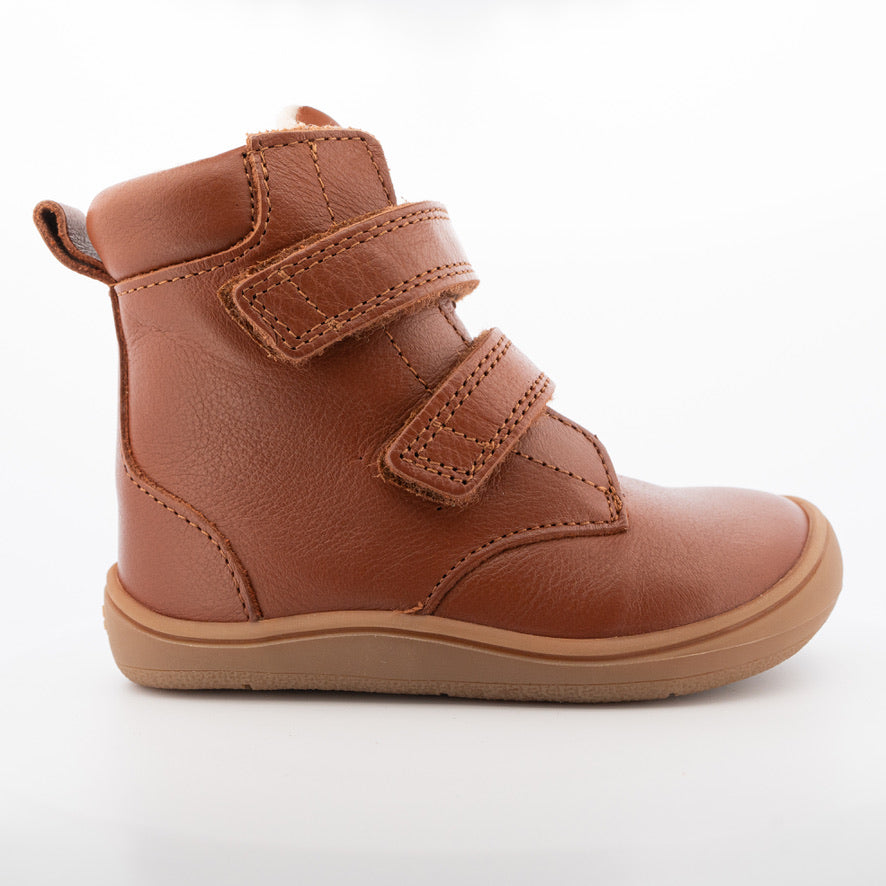Here is a simple temperature guide that makes it easy to choose the right shoes, insoles and socks:
👟 Above 18°C: Sandals or light sneakers - barefoot or with thin cotton socks.
👞 10–18°C: Transition shoes (e.g. Chelsea, Alm transition shoes or Mateo) with a light cotton sock - possibly a wool sole if your child is sensitive to cold.
🥾 6-10°C: Transition shoes with or without TEX membrane (e.g. Alpine or regular transition shoes or winter boots) - supplement with wool insole or thermal insole.
❄️ Below 0°C: Winter boots with wool or thermal socks - thermal soles provide extra insulation.
👉🏼Remember: The right size and freedom of movement are crucial. Barefoot shoes stimulate blood circulation and help your child stay warm naturally.
👣 Good rules to remember
1. As needed: Accessories such as thermal insoles and wool insoles are not always necessary - use them if the child is cold-blooded or the weather requires it.
2. The right size: A boot that is too big cannot warm up, one that is too small hinders movement.
3. Check your feet: Cold feet = more warmth or movement. Sweaty feet = lighter shoes or socks.
4. Movement warms: Barefoot shoes stimulate blood circulation, allowing the child to keep warm on their own.
👣 It always depends on the child
So when it's time to switch to winter boots or thicker soles depends not only on the temperature, but largely on the child's activity level.
• A child who plays and moves a lot can often stay warm longer in transitional shoes.
• A child who sits quietly in a stroller or plays more calmly will need winter boots and extra warmth more quickly.
...We hope this can give you some answers to a lot of questions. :)
Bra Maria from Gogsig



